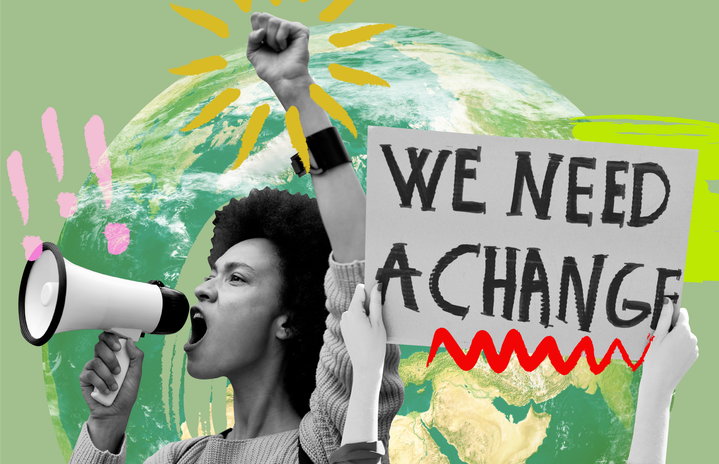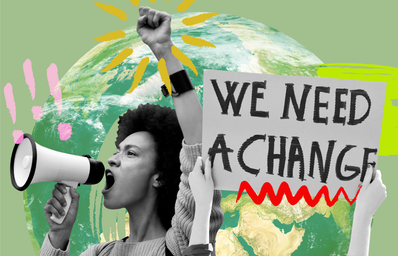Take some time to think about how a single decision can be powerful enough to have more than one impact, whether beneficial or harmful.
In the context of legislative bills, passing them requires extensive thought to determine how beneficial or harmful a certain bill may impact people and the environment. Global warming threatens the environment, human health, and well-being.
A contributor to global warming is carbon dioxide, which attracts heat from the sun. Much carbon dioxide is emitted from industrial facilities, calling for a decision to be made to limit emissions. In 2022, the California governor decided to pass Senate Bill 905, which introduces carbon capture, utilization, and sequestration (CCUS). In addition, this method was adopted by the California Air and Resources Board (CARB), in an effort to reduce greenhouse gas emissions by 85% below 1990 levels no later than 2045.
Although there is controversy about the implementation of CCUS, I will write in support of this intervention by pointing out how the decision to implement the intervention leads to beneficial impacts on not just the environment, but also the health and well being of populations, especially among the vulnerable. After all, living in a country with many racial disparities, it is crucial to stand by policies promoting equity, which is my personal stance on this matter.
First, let’s touch base on why reducing carbon dioxide gas emissions is crucial. Carbon dioxide contributes to climate change, which exacerbates environmental catastrophes such as wildfires and droughts.
Catastrophes as such can limit crop growth, resulting in food shortages and agricultural job losses. Collective events like these then put vulnerable populations..
Therefore, to help mitigate the impacts of climate change on the environment and health and well being of people, carbon dioxide emissions need to be reduced.
Now let’s examine some of the beneficial impacts of CCUS on the environment and health and well being of vulnerable populations. CCUS is capable of capturing up to 90% of carbon emissions directly from industrial facilities.
With this taking effect, carbon dioxide emissions would significantly reduce their contribution to global warming! Not only that, but the environment and health of people would be less susceptible to catastrophes, food shortages, and agricultural job losses.
Another positive impact of CCUS is the creation of job opportunities in agriculture and the process for CCUS to take effect. This increases the opportunity for vulnerable populations to earn an income, thus benefiting their health and well-being.
Despite these beneficial impacts of CCUS, we can also explore other interventions that aim to reduce greenhouse gas emissions, and why some may argue against CCUS. Some may argue that an electrification only approach would be a more effective alternative to reducing gas emissions, by replacing California’s gas system with an electrification only system.
Although an electrification only approach would reduce carbon emissions by over 40% in 2050, the high cost of implementing this system would deeply affect disadvantaged communities, such as low-income populations.
In addition, the transition would take many years before being complete. The long period of time for an electrification approach to be implemented would interfere with AB 32’s scoping plan of reducing greenhouse gas emissions by 85% below 1990 levels no later than 2045 .
CCUS would provide a more balanced and realistic approach in terms of meeting AB 32’s greenhouse gas emission reduction goals without causing financial complications for disadvantaged populations. Not only that, but the absence of financial strain for disadvantaged populations would positively impact their health and well-being.
With that, the decision to implement CCUS has many beneficial impacts on the reduction of carbon dioxide, and keeping the public healthy from potential global warming negative effects and catastrophes.
CCUS reduces carbon dioxide emissions directly from industrial facilities, stores it underground where heat absorption cannot occur, and re-uses carbon to make essential products. Furthermore, CCUS creates job opportunities for people, especially the disadvantaged, for them to be able to earn an income, thus aid in being able to afford the high cost of living in the United States.
CCUS is a balanced approach in effectively meeting AB 32 goals in the future and maintaining the health and well-being of people in a healthy state. However, CCUS alone cannot reduce all gas emissions. There are remaining greenhouse gas emission producers that require attention for more interventions.
What actions are you taking to mitigate climate change? Let us know, @HerCampusSJSU!

